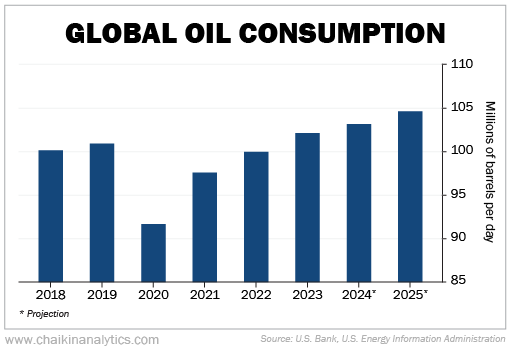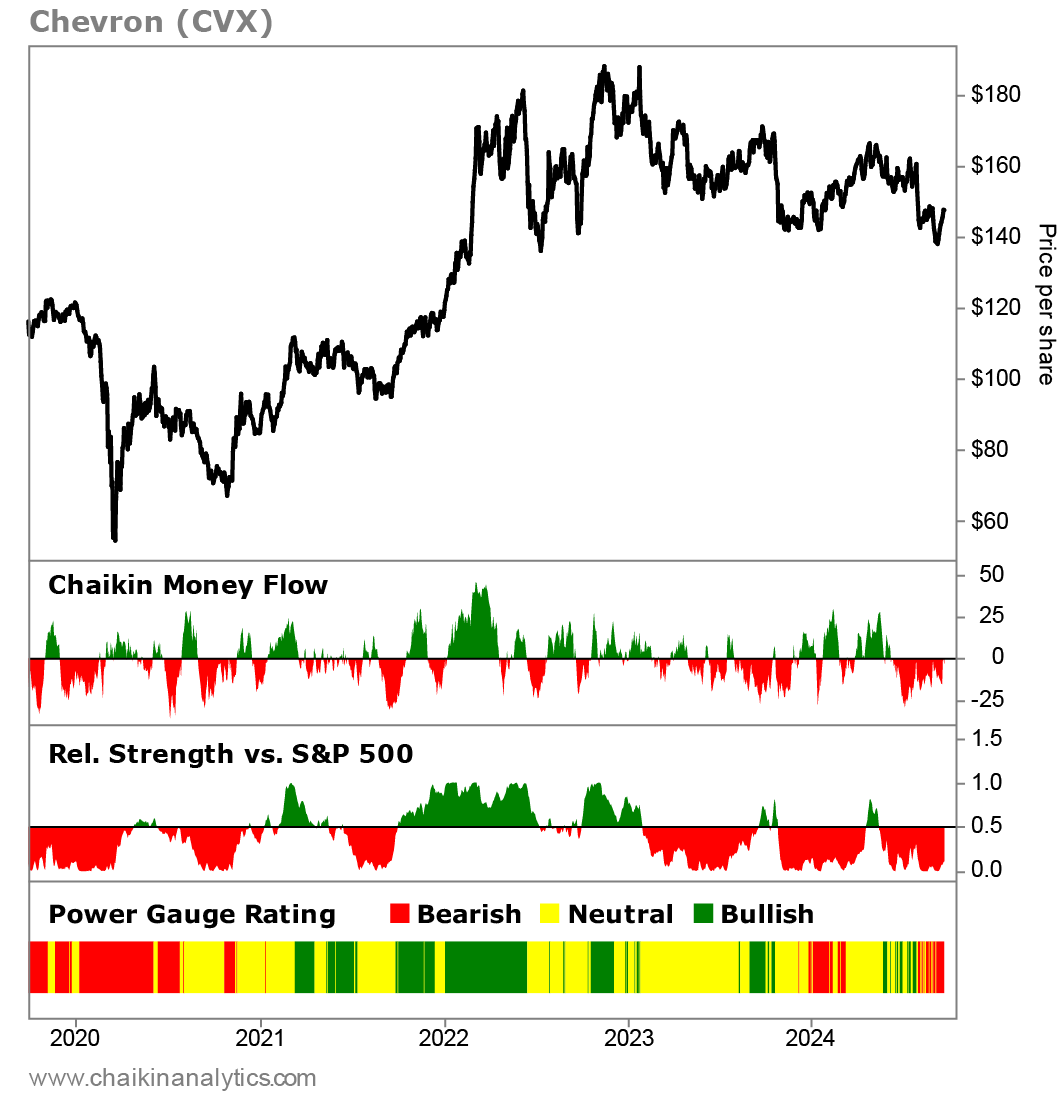The price of everything is up these days… except for energy.
Based on the monthly data, the global price of Brent crude oil was around $79 per barrel in January. It was still around that level last month. Overall, the global price of Brent crude has fallen 6% from where it was back in January 2023.
Natural gas is a bigger loser. Based on the monthly data through August, the Henry Hub natural gas spot price is down 38% in 2024. That’s about 39% below where it was in January last year.
And energy investors feel the pain…
So far in 2024, energy is the worst-performing sector in the S&P 500 Index.
We can track the sector through the Energy Select Sector SPDR Fund (XLE). Year to date, it’s up about 4% compared with the S&P 500’s roughly 20% gain.
We all know this will turn at some point. But oil and gas are global commodities. Their prices are driven by geopolitics more than anything else.
And if you’re like me, geopolitics isn’t your strong suit – particularly forecasting them.
So how will we know when the turn is here? Well, we can turn to the Power Gauge for clues…
For some context, keep in mind that energy used to be a much bigger component of the S&P 500. Back in the 1970s, it made up about 15% of the index. Now it represents less than 4%.
But the energy sector still punches way above its weight. It’s less than 4% of the index, but more than double that (10%) in terms of earnings.
And remember that huge transition away from fossil fuels that we keep hearing about? It’s a long way off.
Electric-vehicle (“EV”) adoption is slowing. The U.S. government had hoped that EVs would make up 50% of all new-car sales by 2030. Analysts at Bank of America now expect EVs to make up less than 30% of vehicle sales by that year.
Then there’s power generation. Wind, solar, and hydroelectric power are slowly growing. But fossil fuels still rule the day. They account for more than half of all energy production in the U.S.
Turning to the rest of the world, the middle class is still growing in China, India, South America, and Africa. That’s a lot of people using more oil and gas than before.
Global oil demand isn’t growing a lot, but it’s still growing. Take a look…
So the market will come around at some point. But unfortunately, we’re not there yet.
Right now, XLE still gets a “very bearish” rating in the Power Gauge. Of course, we can also dig deeper with individual stocks in the sector…
As an example, let’s see what the Power Gauge has to say about a well-known company in the sector – oil and gas giant Chevron (CVX).
Sure, Chevron is a great company. It’s big and operates in all the right markets. Heck, the legendary Warren Buffett owns about 7% of the company. That’s a big stake.
Chevron has a rock-solid balance sheet. And it has increased its dividend for more than 30 years in a row.
But take a look at this five-year chart of the stock with some data from the Power Gauge…
As you can see, the Power Gauge currently gives Chevron a “bearish” rating. I’ll also note that our system rates the company’s industry of oil, gas, and consumable fuels as weak right now.
Meanwhile, take a look at the Chaikin Money Flow panel below the chart…
As a reminder, this indicator measures the so-called “smart money” activity. With the indicator largely in the red over the past couple years, that means more institutional money has been flowing out of Chevron’s stock.
And based on its weak relative strength versus the market, Chevron has been underperforming in recent years. In fact, over the past five years, the stock is up about 17% compared with a roughly 92% gain for the S&P 500.
And look how the Power Gauge turned cautious back in 2022. It saw the underperformance coming.
At this point, I would keep an eye on the Chaikin Money Flow for a more positive outlook from the “smart money.” As long as there are more sellers than buyers in the stock, it’s unlikely to perform well.
But the Power Gauge will be watching other things, too. It’s watching 20 factors in all to let us know when a turn is in the works.
So leave the geopolitics to the talking heads on TV. If you want to know when the time has come to put money to work in energy, just keep an eye on the Power Gauge.
It’s there to help us find the turn.
Good investing,
Joe Austin

